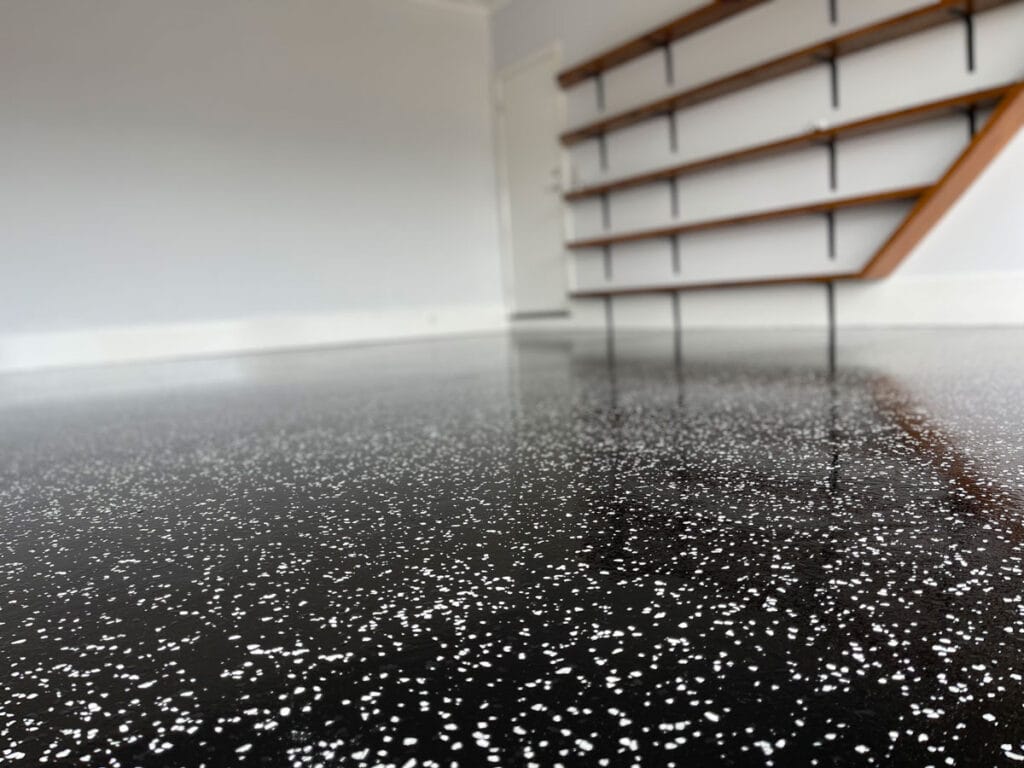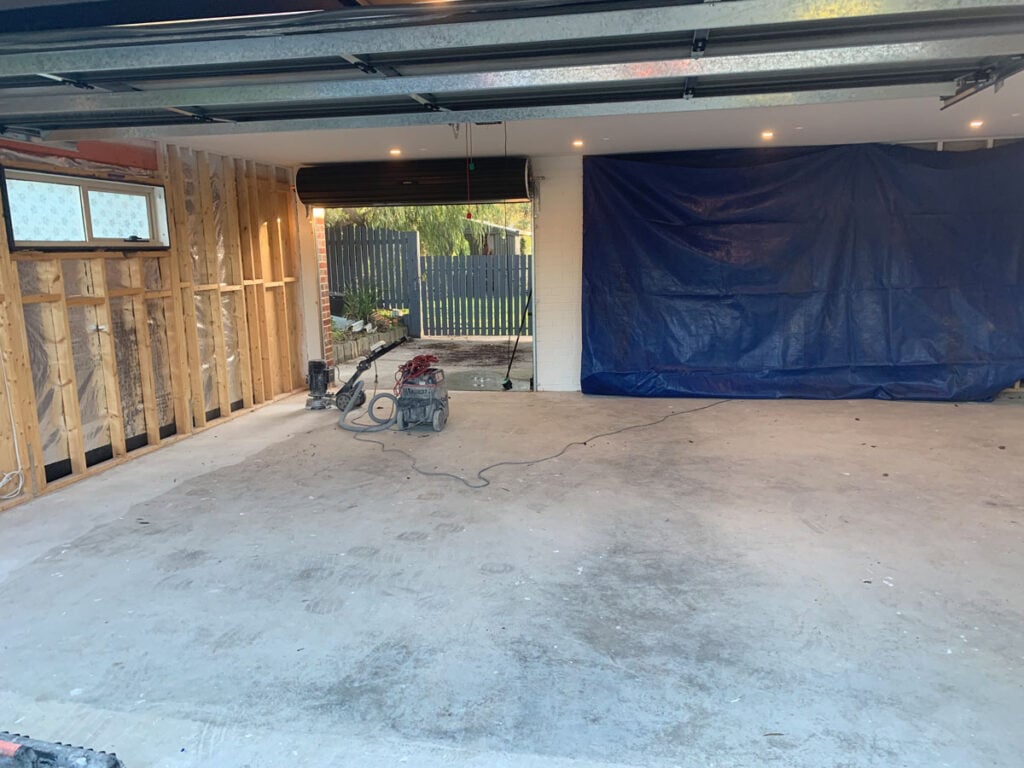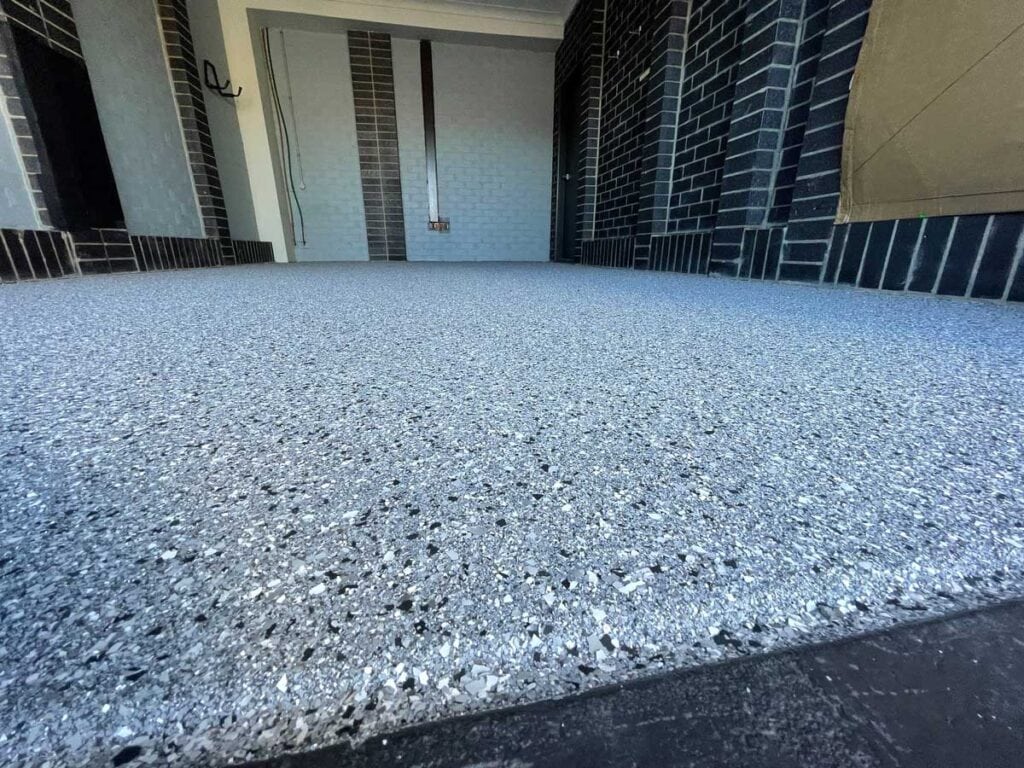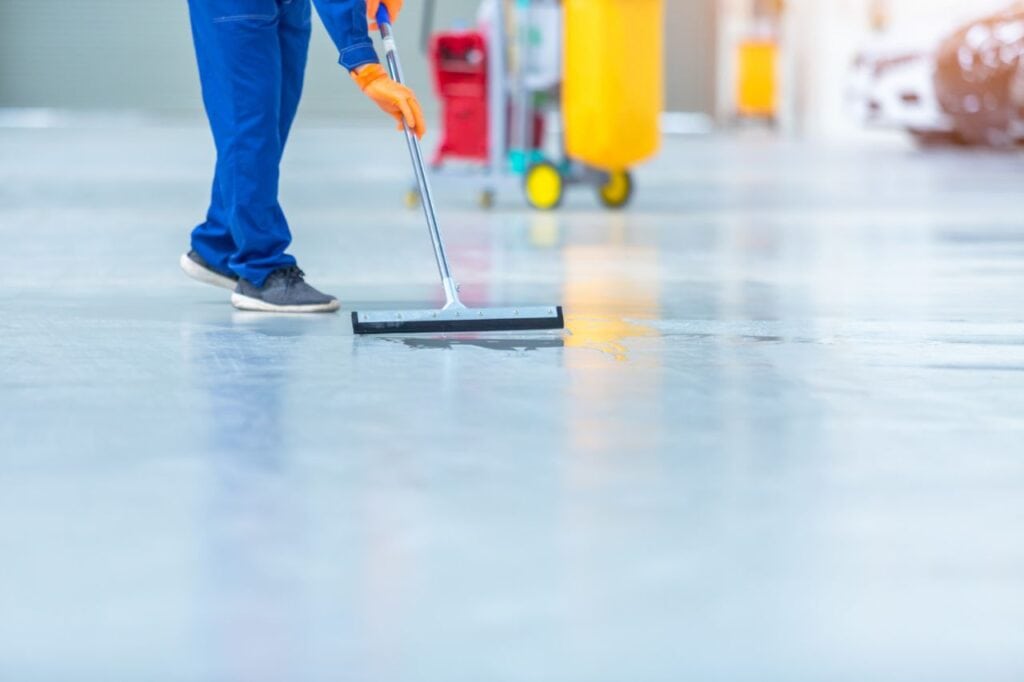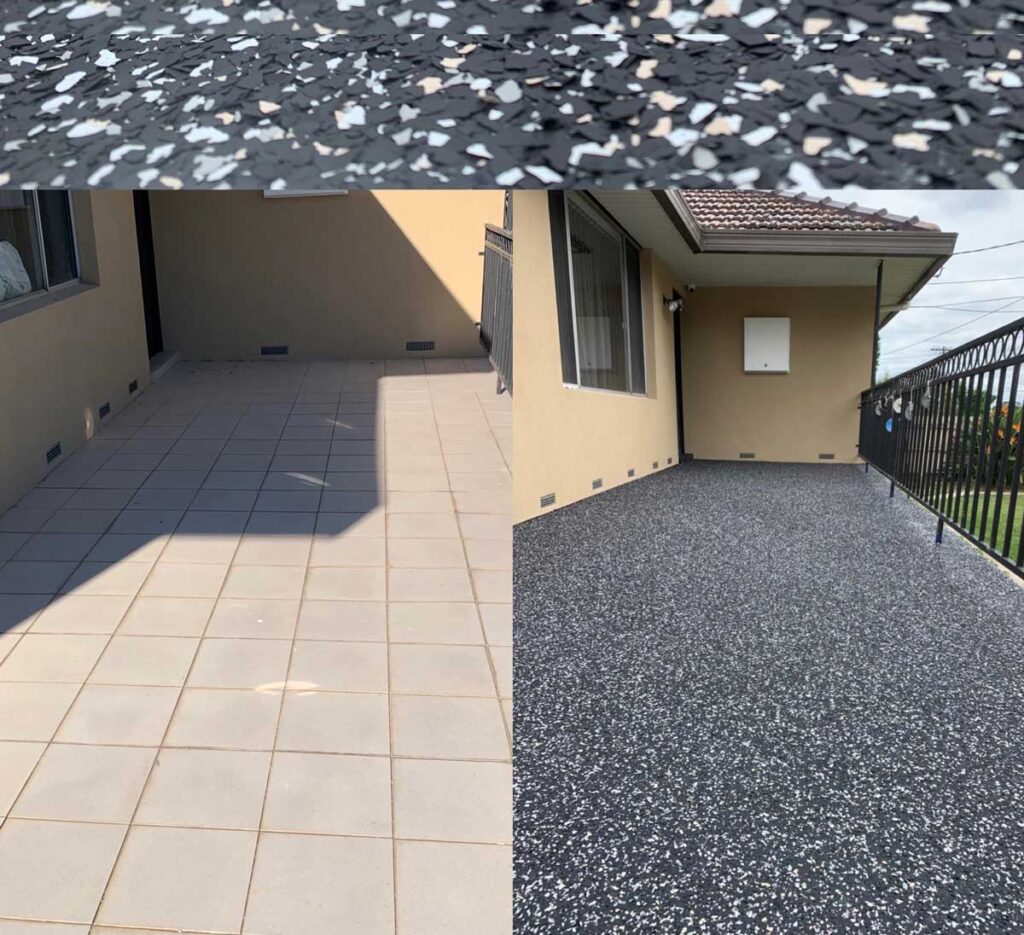Epoxy is an excellent material to use for any and all of your flooring requirements. It ends up producing a floor that is seamless, gorgeous, and long-lasting all at the same time. For the treatment to be successful, it must be carried out with extreme caution from the very beginning to the very end.
If installing the floors yourself is something you're thinking about doing, you might want to rethink that decision. To get the most out of this kind of flooring, a professional installation is absolutely necessary. There is no do-it-yourself kit that can compete with the years of training that professionals in this sector have.
Using this product for the first time could provide you with a number of challenges, particularly if you lack the necessary level of experience. Epoxy is a straightforward but finicky material; therefore, you should entrust the job to trained professionals such as Epoxy Flooring.
Most Common Reasons Epoxy Coatings Fail
Inappropriate Surface Preparation
The instructions that come with an epoxy-based kit purchased from any epoxy provider or major retailer will often instruct the do-it-yourself user to either wash the floor fresh or etch it with strong acid. Nevertheless, cleaning is not sufficient on its own. In spite of the fact that the concrete surface has been properly prepared, cleaned, and acid etched, the surface is not always effective.
Acid etching is an option worth considering for surfaces that have holes that are open and easily accessible enough to enable the acid to react and remove the laitance, which is the thin cement paste that sits on top of the surface. On the other hand, surfaces that are not porous, stained with oil, painted, or exposed to pollutants including wax, tire shine, or other service lubricants will not benefit from acid etching.
Adhesives do not adhere to flat surfaces or surfaces that have not been prepped. Because of this, the fact that your concrete slab is rough and so has a textured surface does not necessarily indicate that the concrete structure will take the epoxy coating. Before installing an epoxy coating, ALL concrete surfaces must first go through surface preparation utilizing a concrete restoration machine, like concrete slab grinders and polishers. This is a requirement.
Peeling Floors
The presence of a number of underlying factors causes an epoxy coating to flake off of floors. The most common cause is inadequate preparation of the epoxy or inadequate application of the epoxy, which can occur while applying the epoxy in settings of extreme temperature, either being too cold or too hot.
In order to properly prepare the surface for the concrete, it must be polished and clear of any oil, grease, debris, and any other types of foreign items or impurities. In the event that this does not occur, the epoxy coating will separate from the floor as the curing process begins, leading to the formation of "pinholes" or "fisheyes," which are circular holes in the finish. To add insult to injury, epoxy does not stick to smooth surfaces, contrary to widespread belief. Surface preparation is still necessary for freshly poured concrete floors, even after they have been installed. Polishing the concrete to prepare it for epoxy is the most effective approach, despite the fact that acid etching may be successful for certain types of concrete.
Faqs About Why Epoxy Floors Fail
What Will Damage An Epoxy Floor?
Oil, automotive chemicals, and other chemicals should be cleaned up as soon as they are spilled, as they have the potential to ruin the surface of an adhesive floor if left there for an extended period of time. It is imperative that any abrasive substances, such as paint, home cleaners, or other liquids, be washed up straight away.
What Do You Do If Your Epoxy Floor Doesn’t Harden?
If the stickiness is the result of a cold floor, you will need to either delay until the temperature of the floor rises or raise the temperature of the air in the room until the floor dries. If the tackiness is random and caused by unequal mixing, the uncured epoxy paint can be scraped off and replaced with a fresh coat of epoxy paint that has been mixed correctly. This will solve the problem.
How Do You Fix Epoxy Mistakes?
What are some ways that you may correct an uneven finish caused by your epoxy resin if it occurs? Mixing slightly more epoxy than is required to cover the area in question entirely is a good rule of thumb to adhere to when working with epoxy. In this case, you will need to smooth the surface with sandpaper and apply a second coat of epoxy if the first one has already set adequately.
How Do You Fix Epoxy That Won’t Cure?
Sandpaper should be utilized; coarse sandpaper with 80 or 90 grit is what we recommend. Sand down the area that has been cured, and then rinse it off with a napkin.
Take off as much of the sticky resin as you can.
After you have scraped the surface and ensured that it is clean, you can then pour a new layer of Baltic Day resin over it.
What Causes The Epoxy To Peel?
There are a number of potential contributors to the epoxy flaking off of your floors. The poor preparation of the epoxy, application of the epoxy when the is too warm or cold, or application of the epoxy when the humidity is too high are the most prevalent causes of this problem. Additionally, the floor must be tidy and clear of any oil, grease, or debris that may be present.
Can We Recoat Epoxy Floor?
You can recoat an epoxy surface that has lost its sheen or been damaged in some other way, but you need to prepare it properly, otherwise, the new epoxy won't cling to the surface. This preparation needs to involve a thorough cleaning using a detergent that is designed to cut through grease in order to remove the thin coating of oil that has undoubtedly accumulated but might not be apparent.
But that's not the end of it. Etching the surface to create it rough enough to react with the new finish is another step that needs to be taken. Epoxy floor paint allows homeowners to create a surface that is not only beautiful but also resistant to scratches and is more durable than wood surfaces and concrete. Epoxy surfaces, however, do not last indefinitely like other types of flooring materials.
There is, however, the possibility of recoating an adhesive floor that has sustained damage and has lost its luster. Again, in order for the fresh epoxy to bond properly to the surface, you will need to thoroughly prepare it. Don't worry about it; we'll take care of everything for you.
How Can Remove An Epoxy Floor?
Because a specialist was required to apply it, only a specialist can remove it successfully. Epoxy flooring forms a chemical bond with the concrete beneath it. Because of this, it has the durability necessary for usage in high-traffic areas such as garages.
Grinding it off the concrete is the most effective method for removing epoxy flooring that has been applied to the surface. The majority of people do not have access to industrial grinders, therefore they hire a contractor.
In addition, it is essential to take care not to harm the concrete that lies beneath the surface; if you do, you might as well just build a new floor. Epoxy flooring is challenging to uninstall from concrete because it has the same desirable features that make it tough to install.
A floor that has been professionally coated with epoxy should if it is properly maintained, last a lifetime. Give us a call if you need help removing epoxy flooring from the concrete you find yourself in that situation. It's possible that we can provide an alternative option for you. At the absolute least, we will be able to direct you through the process of having it removed.
Is Epoxy Flooring Worth It?
You have also arrived at the conclusion that epoxy flooring is a viable option.
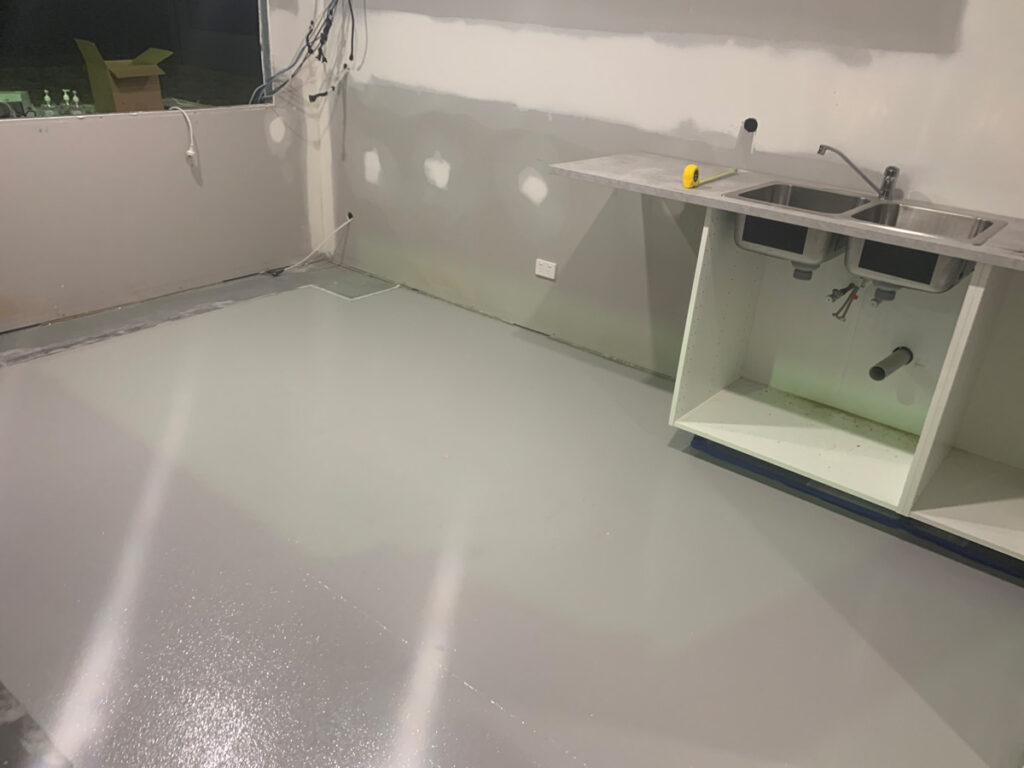
Because people in Melbourne always strive to find the very best and only spend their money on things they are absolutely certain will be worth it, Epoxy flooring does not easily deteriorate and can be fixed in the event that it becomes damaged. This is something that we have learned recently.
Because of this, you shouldn't have any reservations about putting it to use. If you are still interested in learning more information about this floor finish, we recommend that you read the article that discusses the many positive aspects of utilizing epoxy floors in Melbourne.
Obviously, the conclusion that you reach can be influenced by the information provided in this article. If you have read about the benefits of epoxy flooring or you are already familiar with these benefits, then you must believe that this floor is worthwhile, just like the rest of the people in Melbourne.
Contaminated Concrete
Contaminated concrete is an additional issue that frequently leads to the breakdown of epoxy coatings. Even if the concrete is properly prepared, certain contaminants such as silicone, fatty acids, siloxane, and acrylics can penetrate to a depth that makes them capable of affecting the adhesive capabilities of subsequent applications.
To resolve this issue, you may choose to either cut out and replace the significantly contaminated concrete areas or apply strong shot blasting of a CSP-4 or higher strength on occasion. Alternatively, you could choose to treat the issue by using heavy shot blasting.
Poor Bond Strength
A good epoxy coating will have an interfacial adhesion that is greater than the pull strength of the concrete. This is the defining quality of good coating material.
Sadly, some adhesive bonding kits fall short in this regard since the paint they use may be polymer composite latex paint that has an excessive amount of fillers.
The use of industrial-grade epoxy is strongly suggested because, despite the fact that these kits make epoxy substantially more affordable, these kits do not have good bond quality applications that are able to endure persistent wear and strain.
Inadequate Wicking / Wet-Out
The properly applied epoxy coating will "wet out" the previously prepared concrete surface, which is an additional benefit of this type of coating. This means that it soaks up all of the open pores and surface contaminants that are produced by the process of surface preparation.
Since of this, it is impossible to properly wet out the slab if the materials are set too quickly because they may be too thick to infiltrate the pores or they may diminish dramatically during the curing process. This problem is most prominent in newly established businesses that make use of the most recent, cutting-edge 1-day coatings available. New installers frequently ignore the fact that these materials harden too quickly for them to even permeate the concrete, which leads to premature failure of the coating, particularly in locations with weather that is hot and humid.
Excessive Humidity
When epoxy coatings are installed on a surface on a day that has a high level of humidity, this can have a negative impact on the strength properties between the levels of epoxy coatings as well as the inter-coat adhesion. A level of humidity that is too high will almost definitely cause delamination, cloudiness, as well as premature and inappropriate curing. Installers are obligated to always take into account the current weather conditions before continuing with the application of a coating because of this.
Product Mixing Issues
Epoxy coatings will not adequately harden if they are subjected to improper mixing, which means that the materials will not be combined for the appropriate period of time meant for mixing, or that the ingredients will not be blended at the necessary ratios and divisions. In addition, the volume of air that is present throughout the process of mixing can end up having a considerable influence on a few of the layers.
Inconsistent Color
When the color of your epoxy floor covering is uneven, this is another clue that you are performing something incorrectly during the mixing process. Epoxy floor coatings are typically used in garages and workshops.
This variance in color could be caused by a number of things, including poor mixing of the resin, oil, grease, or other impurities, as well as color differences across batches of epoxy finishing kits. In addition to this, the presence of UV light can also have a role in the change of color.
If one set of coating kits is allowed to sit in the sun while the other set is not, the colors of the two sets may end up being different.
Running Out Of Epoxy
When you buy epoxy floor coating kits, there is a good chance that you will not have sufficient material for the project that you have in mind.
This is typically the result of the individual installing the epoxy coatings lacking sufficient experience in the relevant field.
For example, stretching the adhesive coating material to entirely cover the prescribed surface area to guarantee that the coatings covering it entirely is not the most intelligent decision because it will probably occur in the surface layer being either too thin or not as firm as it should be.
Preventing These Problems
The process of applying epoxy floor coverings can be challenging, but there are workarounds that can be used to circumvent obstacles and ensure that similar issues do not arise. First and foremost, you have to make certain that the ground or the concrete is properly prepared.
Before continuing with the installation of the floor coating, make sure that environmental conditions are taken into consideration.
It is also necessary to properly mix the epoxy in order to prevent the formation of air bubbles and discoloration. You are now equipped with the foundational knowledge you need in the event that you decide to pursue this commercial endeavor for one of your locations.
Please take the time to carefully evaluate all of the potential results before attempting to apply epoxy coatings.
By doing things on your own with care and attention, you have the potential to save a lot of money; yet, you also run the risk of running into a lot of problems along the way and ending up paying more money.
Another Issue Is Sub-Standard Concrete
There are numerous things that can have an effect on the work that we do as epoxy flooring installers, including the fact that not all concrete is the same. To begin, concrete contains a minimum amount of each component.
- Cement is the first option. Cement by itself does not produce concrete and does not become hard without the addition of other components.
- Sand is also one of the components. Due to the fact that it has been washed, river sand is a prevalent kind.
- The concrete mix also contains a variety of aggregates, which help bind the characteristics together. The elasticity of the concrete is influenced by the size and form of the aggregate, as well as its durability and strength.
When the concrete is discharged from the batch plant, the components of the concrete are subject to regulation. Things might turn out differently once it is actually there, though.
There are chemicals known as accelerants, retarders, and additives that have the potential to damage the structural strength of the concrete finish once it has been set.
One example of this would be including an excessive amount of water. This allows the concrete relatively easy to work with, but it also increases the likelihood that the "fines" will rise to the surface of the finished product, rendering it more fragile. Coating concrete that is not installed according to the regulations can also lead to a number of problems.
Another Failure Case
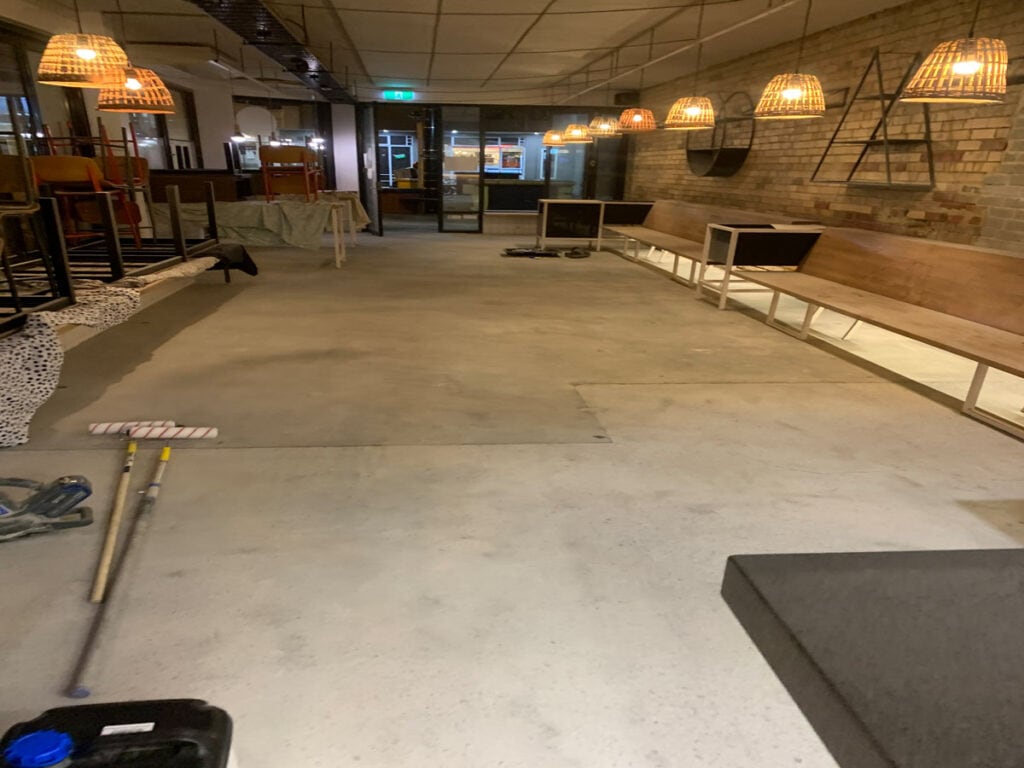
2 Side By Side Garages With Very Different Concrete Floors
In 2017, a builder hired us to install resin flooring in two double garages that were positioned next to each other for the exact same client. These garages were adjacent to one another. Due to the fact that this was a "last minute" project, we were assisting the builder in meeting their deadline with the handover.
The floor of the first garage was made of pre-existing concrete, whereas the floor of the second garage was fresh spanking new concrete.
On each floor, the grinding preparation required a highly varied set of tools and a distinctive collection of diamonds.
After the polishing was finished, we informed the customer that the freshly poured slab had problems that would extend the work and increase the cost.
The constructor did not have much time, so we were asked to complete both buildings concurrently.
A few months later, after the repair had been finished, the manager called us to inform us that the work on the more recent slab had been unsuccessful and that he would immediately engage us to remedy it. We had the concrete examined by a specialist in the field of concrete.
In addition to having a poor structural foundation, he mentioned that the top 5-7 millimeters were mushy and would require a lot of work to correct with the addition of so much water. In addition to this, it did not deviate too much from the norm. Because the concrete was in such terrible condition, it required us five days to bring its quality up to code. This required the application of many priming coatings of materials and extra trowelling.
Things Not To Do To Have A Healthy Epoxy Floor
- We ask that you did not mix different chemical detergents together and that you also not wash epoxy concrete with the finished product. This puts you in a very precarious position.
- In order to keep your epoxy flooring clean, you must avoid using any kind of detergent chemical, particularly soapy detergents. Try using epoxy liquid soap.
- Take caution not to overdo it with the epoxy detergent. A concentration that is too high will also damage the surface of the floor.
- An excess of hot water might be hazardous to your health.
- The misuse of solvent in large amounts might be harmful.
- Utilize chemical cleaners that are based on phenol. These compounds are responsible for the breakdown and deterioration of resin floors.
Conclusion
Epoxy flooring is something that people in Melbourne require more information on in the modern day. Epoxy flooring has seen a recent surge in popularity in Melbourne, and as a result, there has been an uptick in the number of people applying to have it installed.
We have made the decision to offer you the information in this post so that you can make a more confident choice regarding the installation and repair of epoxy flooring in Melbourne.
When individuals in Melbourne inquire to us about epoxy flooring, one of the most significant things they ask is "Does epoxy flooring degrade over time?" What are the chances of it breaking, and is it fixable? One of the most significant issues that people in Melbourne are concerned about is whether or not this flooring can be repaired. Therefore, come read this post with us so that we may put your mind at ease on this matter.
Epoxy is widely regarded as one of the most effective floor coating options currently available. Epoxy Flooring is happy to assist you in any way it can if you are having issues with the flooring in your home. We can help you with anything from refinishing your flooring to merely improving its appearance so that they are more appealing.
Keep in mind that avoiding these problems from occurring in the first place is a lot better option than trying to fix them after they have already gotten worse. Because there are a number of crucial factors to think about while installing epoxy, it is better to leave the job to the professionals who are trained to execute it. The hiring of professionals will save you both money and time in the long run.
Typically, epoxy flooring lasts 2 to 3 years in heavy traffic. Commercial properties—like garages, restaurants, or factory spaces—with lots of daily foot traffic can expect this experience. However, with proper care and maintenance, your epoxy flooring may last much longer.
- Strong Application Fumes. During the epoxy application process, wet epoxy gives off an unpleasant smell. ...
- Long Curing Time. ...
- Slippery When Wet. ...
- Economical Flooring Choice. ...
- Resistant to Damage. ...
- Weather-withstanding. ...
- Aesthetically Pleasing. ...
- Protects and Decreases Wear & Tear.
Extremely safe – Epoxy is a very safe coating for your hard floors. It's slip resistant, shock resistant, and less abrasive than concrete and other types of industrial flooring. ... It can also withstand heat of up to 200 degrees, making it a better choice than most other types of flooring when it comes to fire resistance.
